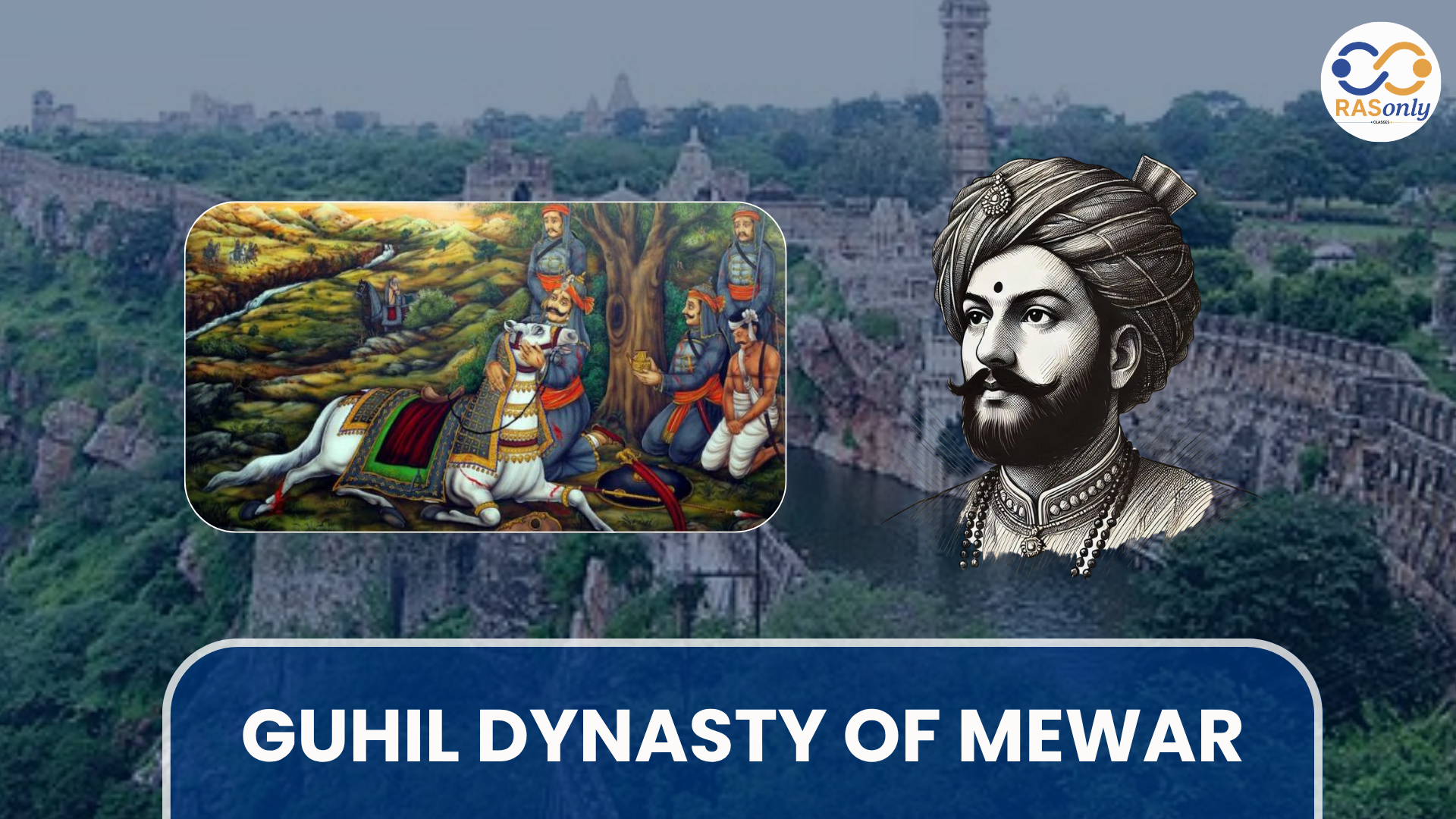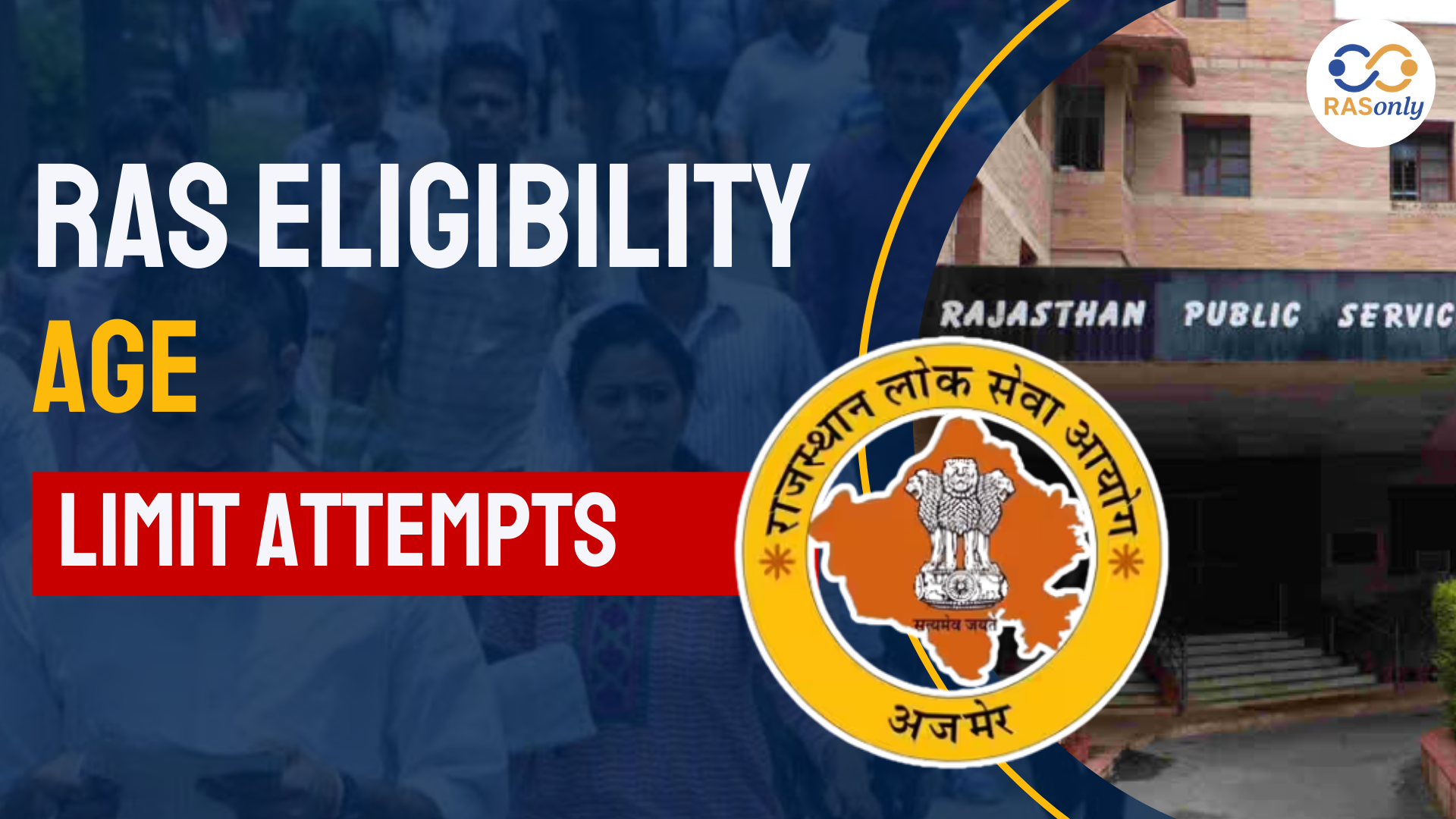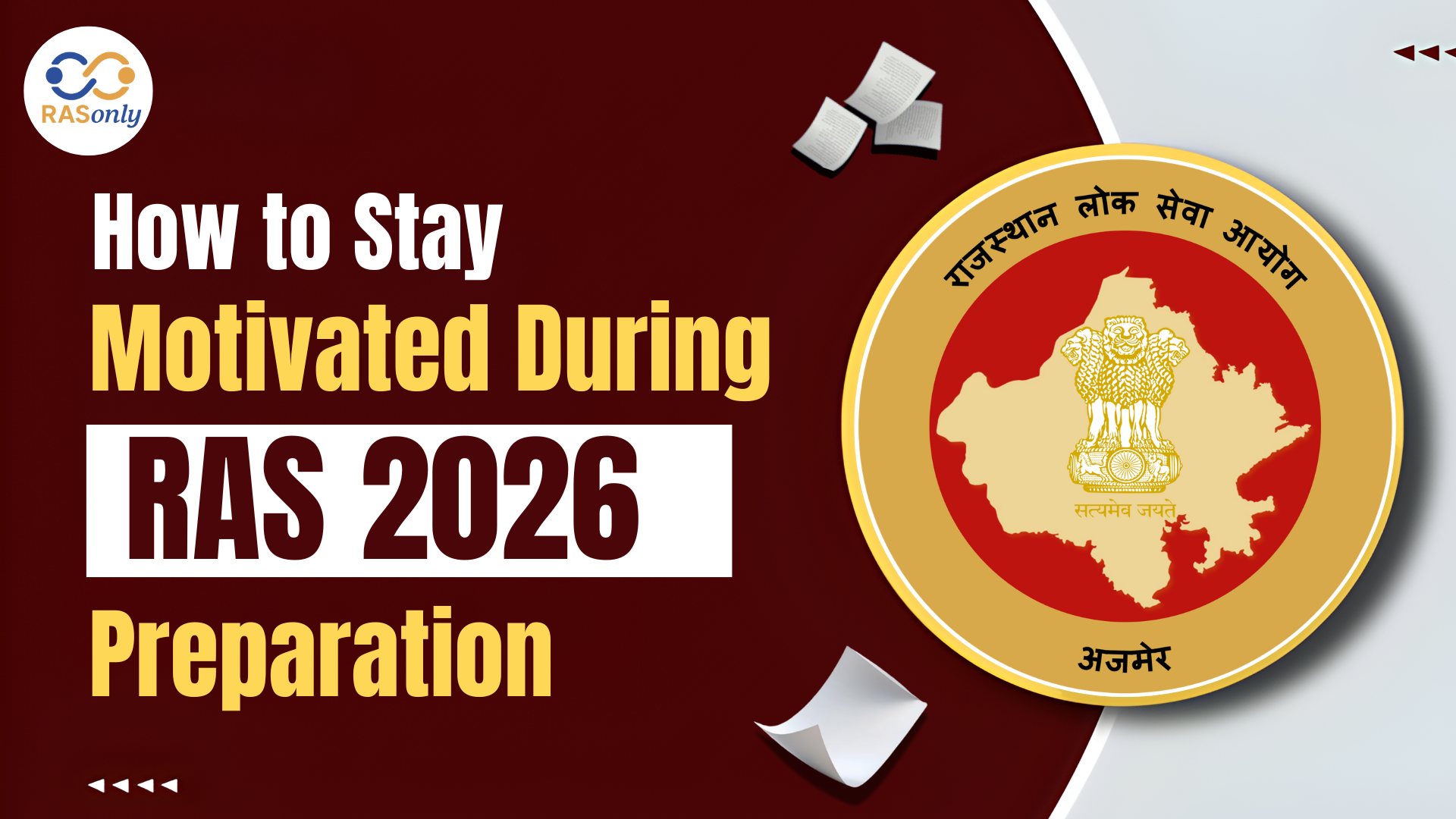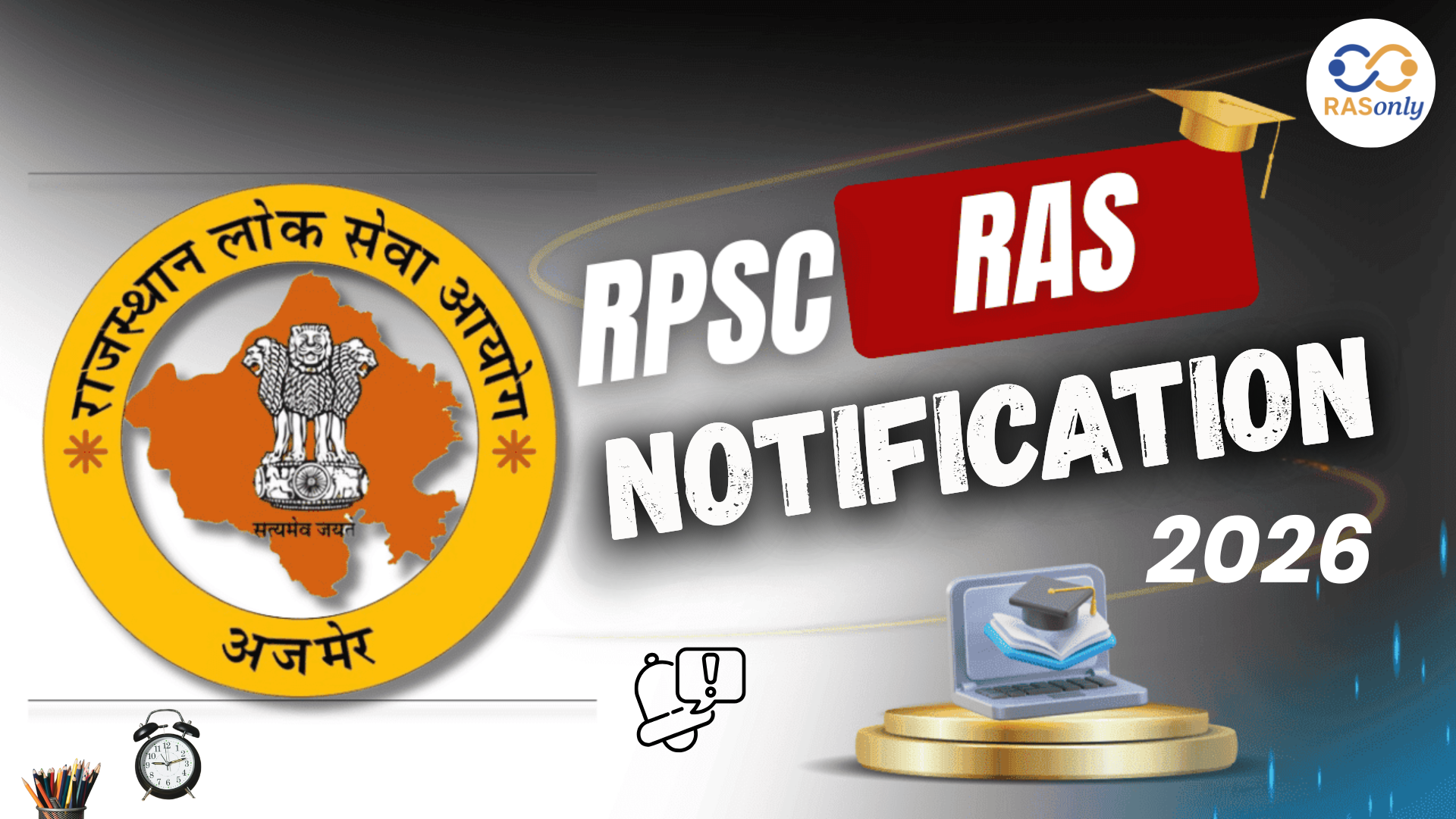RAS Eligibility: Age Limit, Attempts, and Key Rules (2026 Guide)
- >
- RAS Preparation Resources
- >
- Guhil Dynasty of Mewar
Guhil Dynasty of Mewar


The Guhil were the founders of the statehood of Mewar in the 6 th century CE. Bappa Rawal improvised the dynasty not only militarily but also spiritually.After the subsidence of the Rawal offspring in 1303, A Sisodia, Rana Hammir Singh reprised Mewar. The Guhilas and Sisodia rule also had a vital impact upon the political-cultural heritage of Rajasthan.
About Guhil Dynasty of Mewar
- Guhil dynasty of Mewar of Guhilots is among the oldest Rajput families in India. It started in the 6th century CE and led later to the Sisodia Rajput who became major forces in defending the sovereignty of Mewar.
Origin of the Guhil
- Masters of the state of Guhil, are considered to have moved out of Kashmir through Gujarat where they reached Medapata (the present Mewar in Rajasthan).
- Their first ancestor known was Guhadatta.
- Originally they were territories of the Gurjara-Pratihara Empire as its vassals during the 8th10th centuries.
Uprise of Bappa Rawal
- Bhappa Rawal also known as Kalabhoja slept about 728 753 CE.
- Conquering Arab invaders
- Capturing Chittorgarh
- The formation of the state of Mewar
- Is regarded as the founder of the sovereignty of Mewar.
Military Operations and Political Developments
- The Guhilas obtained independence by the 10th century.
- Notable governors: Bharttripatta II and Allata.
- Capitals: Nagahrada (Nagda) then transferred to Ahar.
- Engaged in conflicts with:
- Paramaras
- Chahamanas
- Chalukyas
- Vaghelas
- Delhi Sultanate
Battle and declines
- Jaitrasimha (1213-1252 CE) fought against Sultan Iltutmish.
- In 1303 CE Alauddin defeated Ratnasimha, the last Rawal of the senior branch, during the Siege of Chittorgarh.
- The loss saw the termination of the senior Rawal branch.
Emergence of Sisodia Dynasty
- The 12 th century saw the division of the dynasty into:
- Rawal branch -located in Chittorgarh
- Rana family based at Sisoda was founded by Rahapa Rana
- Founding of Sisodia dynasty In 1326 CE, Rana Hammir Singh had ascended to power and thus reestablished the independence of Mewar.
Key Ruler
|
Ruler |
Period |
Contribution |
|
Guhadatta |
6th Century |
Founder of the dynasty |
|
Bhoja |
586–606 |
Development works |
|
Nagaditya |
626–646 |
Capital shifted to Nagda |
|
Bappa Rawal |
728–753 |
Established sovereignty in Mewar |
|
Jaitrasimha |
1213–1252 |
Resisted Iltutmish |
|
Samar Singh |
1273–1302 |
Father of Ratnasimha |
|
Ratnasimha |
1302–1303 |
Defeated by Alauddin Khilji |
|
Rahapa (Rana) |
12th Century |
Founder of the Sisodia line |
|
Rana Hammir Singh |
1326–1364 |
Re-established Mewar’s independence |
Sisodia Heroic Traditions
- Sisodias are Chattari Rajput who are descendants of Suryavansh, Lord Rama.
- Renowned in maintaining values of honor, resistance and sacrifice.
- Followed the sun as a king symbol.
Jauhar of Chittor- 1303
- It was under siege during the attack of Chittorgarh by Alauddin Khilji:
- Ratnasimha and Rajput men waged a battle.
- Jauhar was done by Rani Padmini and other women.
- Heirs of the Royal were spared, and dynasties continued.
Religious and Cultural Heritage
- With Sisodias and Guhilas, people favored temple construction and exploited Hinduism.
- Enshrined Vaishnavism and safeguarded Hindu culture under the foreign rule.
Conclusion
Based on the origin that the Guhil dynasty of Mewar should be harkening back into the 6 th century, it established the framework of one of the strongest and most culturally advanced Rajput states in India. During the reign of some of the renowned rulers of the land including Bappa Rawal, the dynasty claimed supremacy and protected its territory against external invasion. House traditions were also continued by the Sisodia line who became one of the most influential guides of the Rajput respect, the Hindu way of life and regional self-rule, particularly in the medieval times. The Guhilas and the Sisodias along with each other not only carved the political history of Rajasthan but also marked their identities as feats of valor, sacrifice, and undying resistance that made an indelible mark in the history of India
Post Category
- RAS Salary
- Result
- RAS Admit Card
- RAS Job
- RAS Cutoff
- Preparation Tips
- RAS Answer Key
- RAS Exam Analysis
- RAS Syllabus
- RAS Previous Year Papers
- RPSC RAS Exam Pattern
- RAS Interview
- RAS Mains Exam Date
- RAS Vacancy
- RAS Test Series
- RAS Best Books
- RAS Preparation Resources
- RAS Coaching Centre
- History
- Polity
- Geography
- Economics
- Science
- Art and Culture
- RPSC RAS Application Form
- RPSC RAS Notification
RASonly Interview Guidance Program

Mr. Ashok Jain
Ex-Chief Secretary Govt of Rajasthan
- IAS officer of the 1981 batch, Rajasthan cadre.
- Passionate about mentoring the next generation of RAS officers with real-world insights.
- Got retired in Dec 2017 from the post of Chief Secretary of the state of Rajasthan.

Mr. Guru Charan Rai
Ex-ASP / SP in Jaisalmer
- Guru Charan Rai, IPS (Retd), retired as Inspector General of Police (Security), Rajasthan, Jaipur in 2017.
- Served as ASP and SP in Jaisalmer, Nagaur, Sri Ganganagar, Sawai Madhopur, Dausa, Sikar, and Karauli.
- He also held key positions as DIGP and IGP in the Law and Order division.

Mr. Rakesh Verma
Ex-IAS Officer, B.Tech, MBA, and M.A. (Economics)
- IAS officer of the 1981 batch and retired in Chief Secretary Rank.
- Civil servant of high repute and vast experience.
- Has been teaching UPSC CSE subjects for the last six years.
Related Post
👉🏻 Register Today to Join Classes! 👍🏻
- Team RASOnly -
🎯 Benefits of RASOnly Coaching:
- ✅ 1:1 Mentorship with RAS Officers
- ✅ Experienced and Expert Faculty
- ✅ Free Library Access
- ✅ Daily Minimum 4 Hours Must
- ✅ Comprehensive Study Material
- ✅ Regular Tests & Performance Analysis
- ✅ Personalized Guidance & Doubt Solving
- ✅ Online & Offline Class Options
- ✅ Affordable Fees with Quality Education
Key Highlights:
- 👉🏻 3-Day Refund Policy
- 👉🏻 New Batch Starting from 04 August
- 👉🏻 Registration Amount: Only ₹1000





